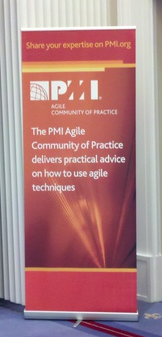 Last year, when a vendor was asked to submit a Statement Of Work (SOW) to address the Statement of Objectives (SOO), they came back with a very interesting presentation.
Last year, when a vendor was asked to submit a Statement Of Work (SOW) to address the Statement of Objectives (SOO), they came back with a very interesting presentation.
Upon completing our Lessons Learned at the end of the last period of performance, we have something that will solve all of your problems.
Now, I don't know about you, but whenever someone says that, I get very suspicious. All is an absolute and absolutes are red flags. It's a particularly large red flag, considering the customer was not invited to participate in the Lessons Learned session(s).
What was the proposed solution to All of the customer's problems? The vendor called it "agile" (with a lower case "a").
Seriously? That's all you have? Agile will solve all of the customer's problems? I sat quietly and said nothing of having several years of experience actually using Agile and leading Agile and Scrum teams. (Note that I prefer to use a capital "A")
Needless to say, the vendor had no experience following Agile principles or leading Agile teams. The vendor, in my eyes, failed to educate themselves or the customer on the value Agile can deliver. Over the course of the next year, they shied away from face-to-face communications and all of the things the customer would see value in. They continued to keep their functional teams in silos and nothing changed. After a few months of the customer and myself telling them they were not following Agile principles, they admitted they were doing an undocumented agile-like-waterfall hybrid. After a few more months of telling them they were not following any kind of Agile "like" process, they lamented and said they were now following a waterfall process.
NOW? I asked myself. This vendor couldn't even define what done meant, let alone explain what processes they were following.
In the last few months, three major events have happened to the program I support.
- The CIO retired
- The Program Director retired
- The program budget was just cut over 10%
A new CIO and Program Director are now in charge of the program and realize they have a lot less money to work with. So, how are they going to turn this around?
Let's fast forward to a few weeks ago. The new Program Director calls an all hands meeting. What is going to change? She started the meeting by making a profound statement
Communications is key to our success.
If we do not communicate, we will fail.
What is she asking us to do this next year?
- The vendor will not have their contract option year exercised
- The PMO will be re-oriented away from its current functional configuration
- 8 Cross-functional Project Teams are being created
- Each team will include (at a minimum) a product owner, a PMO lead, and technical point of contact(s)
- Regular communications will take place for each project team, activities and statuses will be reported up to the program level, and then disseminated back down to the rest of the PMO
- The Progam Director is giving teams of motivated individuals the environment and support needed, and trusting that we will get the job done
At no time did she ever say Agile. But, is it really necessary to? As long as we begin to follow Agile principles, you can call it whatever you want. I see this first step as a big step in the right direction.
Like the image? Find it at Pictofigo







